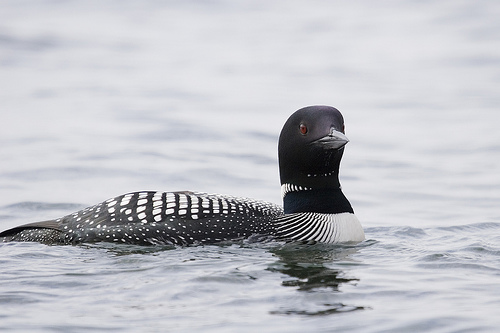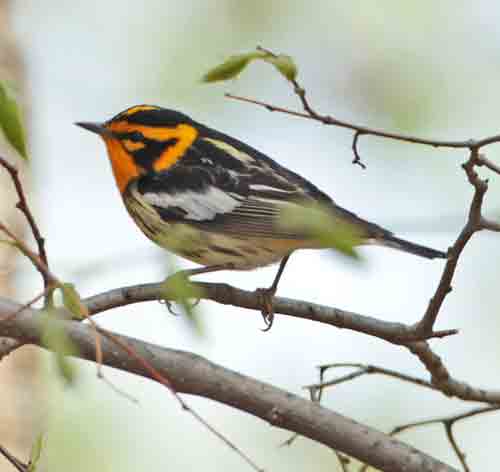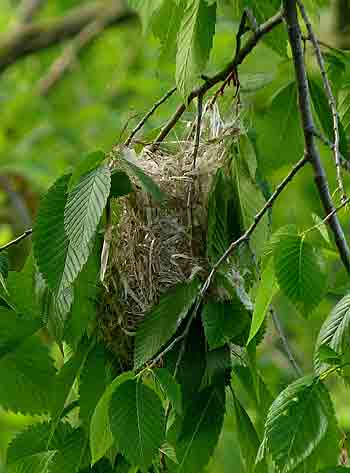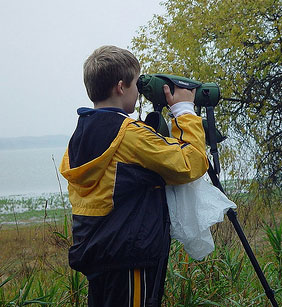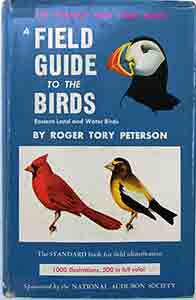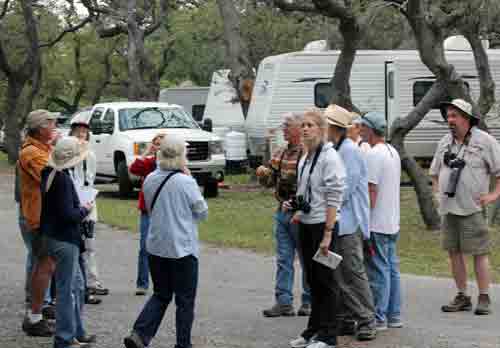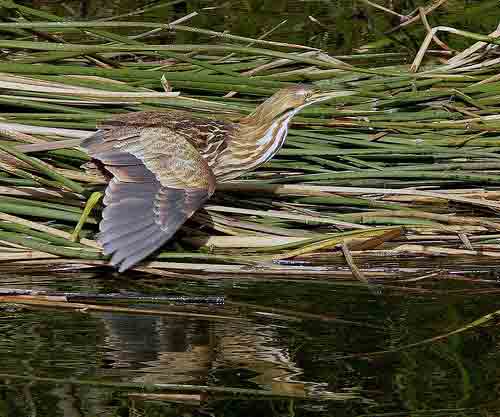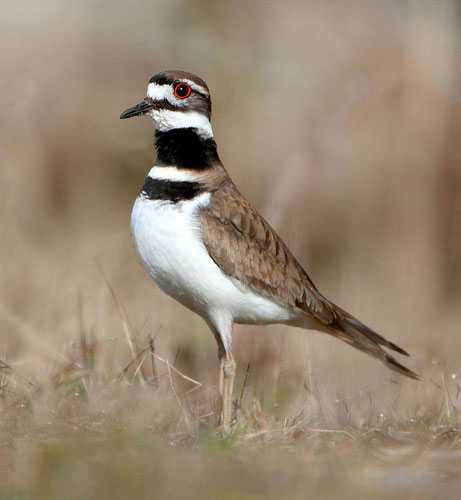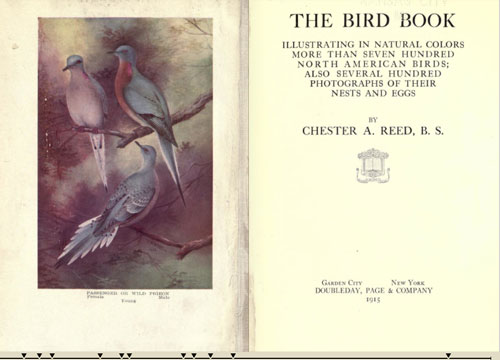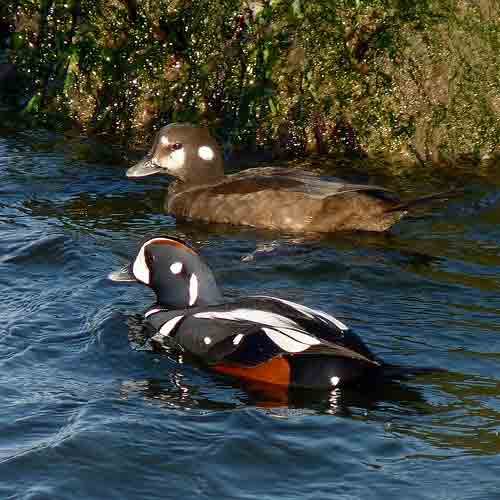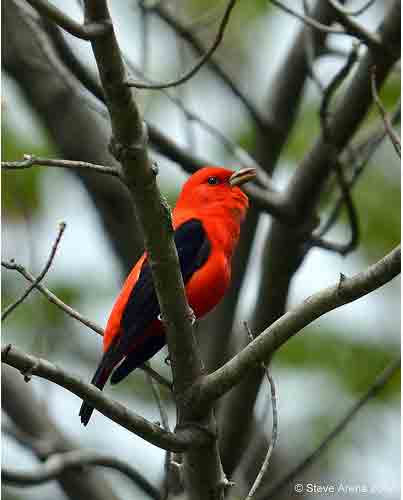Dana D was “oozed” into birding by a rustic island camp:
Now admittedly it is a long time ago now but I was blessed with having grandparents that read an ad in the mid 1920’s of a cabin for rent on a pond in Center Tuftonboro, NH. I am told that when the sun rose that next day (after they arrived in the dark) the magic of the pond captured them and a few years later they had built a cabin across the lake. I was also very fortunate that my Mother loved that spot and I remember the moment that school got out, my parents would pack us up and off we would go for the summer living the life of Huckleberry Finn. Those of you that have been there know that my side of the lake is much the same as it was way back when.
But this is the spot where the wonders of the spot just oozed out and enchanted me. I am not sure now if it was the loons that swam by, or the majestic Scarlet Tanager or my favorite Black-throated Blue Warbler or the Pileated Woodpeckers that first captured me or whether it was that whole experience that propelled me to ask my parents for a bird book for my 8th birthday. I like the ooze idea! Now the place is mine and Bob and I spend most of the summer there still entranced by those same experiences and working hard to preserve them.
Common Loons swimming by the camp were part of Dana’s “spark.” photo by mikebaird
We still have to go by boat – we do have a footpath but is like island living. We still have no electricity and a little house in the woods, and a spring further back in the woods for drinking water . In the old days we cooked with wood on a big old stove and had to haul in ice for a frig.. Now the “modern” things we have consist of propane tanks that power a frig, stove and a few lights, and recently a solar panel that runs a little demand pump which allows us to have lake water coming out of a kitchen sink and will charge those modern things like my computer and a cell phone.
This influence has propelled me for the rest of my life sustaining a passionate interest in birds – I have been very fortunate as no matter whether I was working at a Mass Audubon summer camp, at Cornell getting to know Allan and Kellogg, teaching biology in India, travelling around the world, or just watching my bird feeders here in North Andover, I know that my disease in incurable and I will always be caught in this wonderful web.
Dick H (VT) was another who started birding very young and has continued for many decades:
Was born and brought up in Winchester, MA and since the age of 8, 1940’s, I asked for Birds of North America, can’t think of the author, and liked to sketch from the pictures in the book and from real life. Even then, I had to know the names. When I went fishing at Big Winter Pond, would sit for long periods just watching the birds and testing my knowledge of them in my head. But, as a teenager, I was more interested in sports and not into birding as such, I simply got enjoyment from being outside and knowing as much about the natural history around me as I could at that age. What sparked a passion for birding as a way of life waited till I was visiting our family place in Maine for a week in May in the late 1950’s. I saw for the first time a gorgeous male Blackburnian Warbler singing from a spruce tree just outside the house where we were staying! I would watch in awe! Oh my, that was the moment!! I was bound and determined to learn the Warblers and set out with my Petersen’s to experience as many as I could find at that time.
The Blackburnian Warbler was a “spark bird” for many, including Dick H. photo by Matt Tillet
Went to different local habitats in the area. I have never looked back, have loved every moment, from banding in the 60’s and 70’s, going after rarities, being involved with Christmas Counts. Now that I’m retired and live in Vermont, keeping records of whatever I see on our property is fun for me. Beyond going out west or to Churchill, I have been fortunate enough that because John Kricher, don’t think he knows this, but through him and his books got me interested in tropical birds. That has led to trips to Africa, Brazil, Panama, Venezuela and Australia. Many thanks John!!
Jim’s dad was his spark:
My spark was my dad. I was blessed with a father who liked to be outdoors (mainly fishing) but happily supported his son’s obsession with birds. The gasoline to that spark was a very active local birdwatching club. Before I was a teenager I had visited many famous birding spots in England including the Isles of Silly. I progressed to twitching which was great fun until I discovered the opposite sex. Bird photography is the latest iteration of my life long passion. In 2010 I was finally able to take my dad to Scotland to finally see our nemesis bird, a Corn Crake.
Lesley’s grandfather provided the spark:
For me, it was my loving grandfather who adored the outdoors . Although I was born and raised in Marblehead, MA, we had a summer home on a mountain overlooking New Found Lake in NH and it was here that my granddaddy took my brother and myself fishing and hiking in the woods where he would point out the birds, wildlife, and wildflowers. He gave my brother and myself a set of 2 books of birds, they were large books, one was Songbirds and the other was Water Birds and they were filled with the most beautiful colored photos of birds that I longed to see , but the best part of these books was they each came with these flexible plastic records that had all the songs of the birds. This was pure magic for me and although I could not have been more than 8 to 10 years old I was totally hooked, I listened to the records and committed so many songs to memory and was completely enchanted when I found, through song, my first Baltimore Oriole in my very own neighborhood. I can still remember seeing that first flash of brilliant orange and even found their sling like nest in a big old Elm tree… ya that was like 50 years ago.
Lesley still remembers the oriole’s nest, like this one, from fifty years ago. photo by Dendroica cerulea
So when I started to become serious with photography 10 years ago, it was just so natural for me to choose birds as one of my main subjects. My world has been so magical since resuming my love of birds and nature the last 10 years. I have seen birds that I never dreamed I would and so many right under my nose. It is a joyous journey and I am so happy to be on it.
And Fred, inspired by Miss Dickey, has used her as a model to pass the spark on:
I remember no spark. The interest was always there in all kinds of nature. There was no one bird or one event that started me on my path. I think I was born with it. But it wasn’t until I was 8 in 1964 that it really started to grow.=A0 That was when my parents signed me up for the bird club at Children’s Museum in Jamaica Plain, taught by Miss (Miriam E) Dickey. She fed the sparks into flames which have burned intensely ever since. She fed the desire to learn as much as I possibly could and helped me to see as many birds as I could. The first bird I identified on my own was in the big sugar maple tree in front of the house in West Roxbury shortly after starting in the bird club. A beautiful bird with iridescent purple and green on its feathers, a bright yellow beak, and fluttering its wings as it sang the most amazing complex song. It was the song that grabbed my attention and drew me outside from the bedroom. I memorized the bird, studying it with the binoculars my grampa had given me. Then I ran into the house and identified it from the posters hanging on my wall. My first bird. A European Starling. I was so excited. And so amazed that it was from Europe. The next time in bird club, Miss Dickey told me it wasn’t rare, which was a disappointment,but she did not squelch my enthusiasm, and congratulated me on my identification. Miss Dickey led us on weekly walks at the Arnold Arboretum or around Jamaica Pond and through Sargent’s Estate. Every Saturday AM during the school year. Amazing.
Miss Dickey was a model for me. I am very thankful for her. I have taught grades 3 and 9-12 for over 30 years. Inspired by her I have tried to plant new sparks, and fan already-existing ones into flames in my students and teen bird club members, by getting them out there into nature to experience it first hand, hoping that they will form a heart-connection with nature and a great curiosity about it. It is a real joy to see this passion for birds (or any kind of nature) take off in their hearts and minds and faces, and sometimes careers.
Initial Post Responses: Part 1 Part 2 Part 3
Join those who comment on what spark set them on their birding journey? Tell us about it with a comment below. You should sign up by RSS feed or via email to have future “spark” articles sent to you. Thanks

